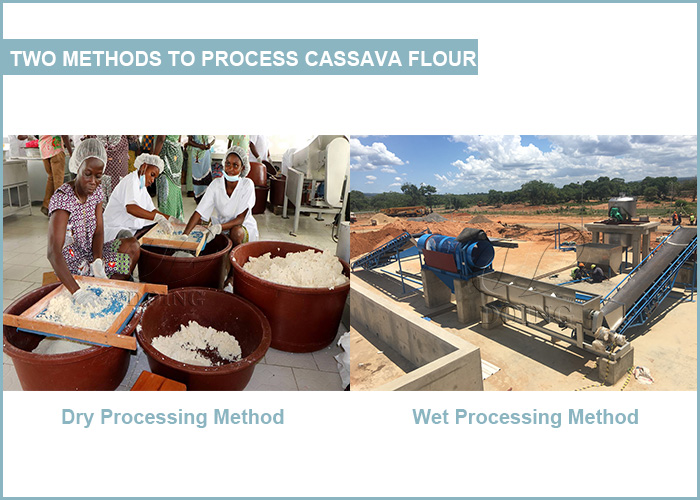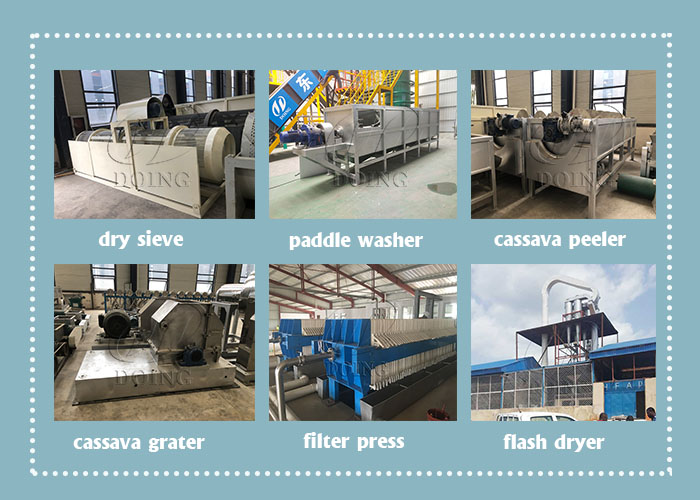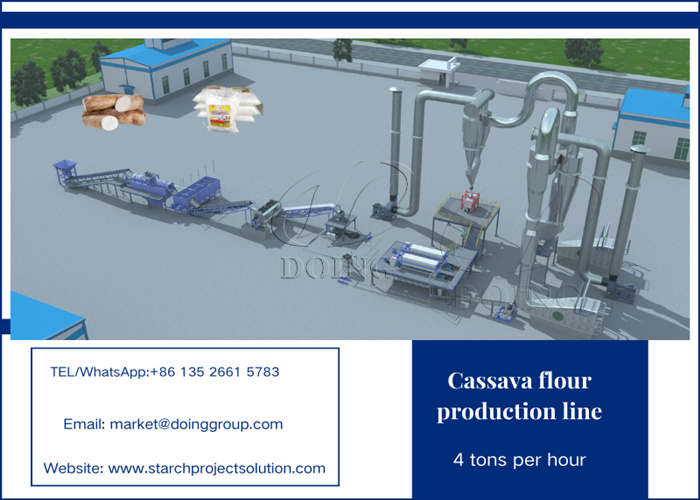Blog
 2025-05-09
2025-05-09Starting a cassava flour processing business requires careful planning, especially when selecting the right equipment. The efficiency, cost-effectiveness, and scalability of your factory depend on making informed decisions.
Below are 3 common questions to consider when setting up your cassava flour factory and choosing the processing machinery. Henan Jinrui will help you start cassava flour processing business by answering these 3 common questions.
 Two methods to process cassava flour
Two methods to process cassava flour
Question 1: Dry or wet processing method should be selected and what equipment is needed?
The first major question for engaging in cassava flour processing is choosing between dry and wet processing methods. Each approach requires different processing equipment and impacts cassava flour quality, energy use, and cost. Before starting cassava flour processing business, learn the different processing method and select the suitable method and processing equipment for cassava flour production.
Dry Procesing Method and Equipment Needed
The dry processing method for cassava flour production is simpler and more cost - effective in terms of initial investment, but there will be more impurities in cassava flour.The process of cassava flour production by dry method includes cleaning, peeling, slicing, drying, milling, sieving and packing. There are some processing machines in each stage.
| Process of dry method | Equipment needed |
| Washing | Dry sieve and paddle washer |
| Peeling | Cassava peeler |
| Slicing | Cassava slicer |
| Drying | Hot-air dryers or solar drying systems |
| Milling | Hammer mills or grinder |
| Sieving | Sifter sieving machine |
| Packing | Packing machine |
Wet Processing method and Equipment Needed
Compared with dry processing method, wet processing of cassava flour is more hygienic, more efficient, and the texture of the cassava flour obtained will be finer. The wet processing method typically involves washing, peeling, grating, dewatering, drying, sieving and packing. The processing machines needed is also different with dry method processing equipment.
| Process of wet method | Equipment needed |
| Washing | Dry sieve and paddle washer |
| Peeling | Cassava peeler |
| Grinding | Cutting machine and rasper |
| Dewatering | Plate-frame filter press |
| Drying | Flash dryer |
| Sieving | Sifter sieving machine |
| Packing | Packing machine |
Question 2: What capacity of cassava flour processing equipment should be chosen and what's the prices?
After deciding on the appropriate cassava flour processing method, what capacity of processing equipment will be chosen, that is also a common question when we start the cassava flour processing business and equipment selection. The capacity of cassava flour production line is usually affected by two factors: raw material supply and budget. Usually 4 tons of cassava can be processed into 1 ton of cassava flour, and the price of production lines with different capacities is also different. Taking wet processing of cassava flour as an example, the equipment provided by Henan Jinrui cost of a 5-10TPD small cassava flour production line is about 50,000-200,000 USD. And the cost of cassava flour production line with a larger capacity will be higher.
 Cassava flour processing equipment
Cassava flour processing equipment
If you are the new starters in the cassava flour industry with limited budget, Henan Jinrui suggest that you can get some main machines, such as peeling machine, grinding machine, dewatering machine, drying machine etc, which needn't to invest too much and then can upscale in the future. But if you want to make a more-automatic cassava flour processing line with enough budget, the large capacity processing line can be provided by Henan Jinrui, with more machines, such as, hopper, belt conveyor, paddle washer.
Question 3: How to design the cassava flour factory layout for optimal efficiency?
After we confirm the equipment list, the next preparation is the workshop. How to design the cassava flour factory layout for optimal efficiency, which is also the common question confused by the investors before a cassava flour factory. A well - designed factory layout can enhance production efficiency, reduce operational costs, and ensure smooth workflow. When planning the layout, consider the processing sequence, starting from raw material reception to the final product packaging. Separate areas should be allocated for different processes such as cleaning, processing, drying, grinding, and storage. Ensure that there is sufficient space for equipment installation, maintenance, and transportation of materials. The layout should also take into account safety regulations, with clear passageways and proper ventilation. For example, placing the drying equipment in an area with good air circulation can improve drying efficiency.
 Cassava flour factory layout design
Cassava flour factory layout design
If you decide to purchase cassava flour processing equipment from Henan Jinrui, you just tell the sales manager the length and the width. Then our manager will work with the engineering team to design the most efficient and reasonable factory production line layout for you.
In conclusion, answering these three key questions - about the processing method and machine, equipment capacity and price, and factory layout - is essential for a successful start of a cassava flour factory. Careful consideration and research in these areas will lay a solid foundation for a profitable and efficient cassava flour processing business. If you plan to set up a cassava flour factory, welcome to contact Henan Jinrui, which can provide you with a full range of services from factory design to equipment installation!
Want to know more about our products or services? Fill out the contact form below, and we’ll to get back to you and you will get the price list. Please also feel free to contact us by email or phone.( * Denotes a required field).